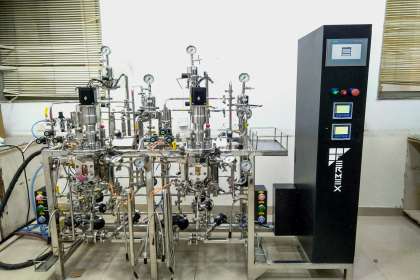
Introduction
Welcome to a captivating journey into the fascinating world of vinegar production fermenter machine! Vinegar, a versatile and ancient elixir, has been prized for its myriad uses and unique flavor profile. In this blog, we will delve into the art and science behind vinegar production, exploring its history, manufacturing processes, and the diverse types of vinegar found around the world.
1. A Brief History of Vinegar
Vinegar’s story dates back thousands of years, with its roots deeply embedded in various civilizations. The word “vinegar” itself originates from the French term “vinaigre,” meaning “sour wine.” The Babylonians and Egyptians were among the earliest known users of vinegar, employing it for medicinal and culinary purposes. Its popularity spread across ancient Rome, Greece, and China, where it became an essential part of everyday life.
2. The Chemistry Behind Vinegar
Vinegar is primarily composed of acetic acid, which gives it its characteristic tangy taste and pungent aroma. It is a result of a two-step fermentation process that converts alcohol into acetic acid. The first step involves fermenting sugars into alcohol, and in the second step, acetic acid bacteria convert the alcohol into acetic acid. The process may sound simple, but mastering it requires precision and expertise.
3. The Art of Vinegar Making
Step 1: Selection of Raw Materials
Vinegar can be made from various sources, such as fruits, grains, and wine. Each type of vinegar offers unique flavors and aromas, making the selection of raw materials crucial to the final product
Step 2: Fermentation Process
The fermentation process is the heart of vinegar production. It involves introducing acetic acid bacteria into the alcohol solution, and the magic begins. Oxygen, temperature, and acidity levels play pivotal roles in ensuring a successful fermentation process.
Step 3: Aging and Flavor Development
After fermentation, some vinegar types undergo aging, where the flavours intensify and mellow. The aging process allows the vinegar to develop its distinct characteristics and complexities.
4. 4. The Variety of Vinegars
4.1 Apple Cider Vinegar
Made from fermented apple cider, this popular vinegar offers a myriad of health benefits and culinary uses. It’s a natural sweetness and tangy taste make it a favorite in salad dressings and marinades.
4.2 Balsamic Vinegar
originating from Italy, balsamic vinegar is aged for several years in wooden barrels, acquiring a rich, sweet flavor with a hint of acidity. It is an exquisite addition to gourmet dishes and desserts.
4.3 Rice Vinegar
A staple in Asian cuisine, rice vinegar is mild and delicate, balancing flavors without overpowering the dish. It is a vital ingredient in sushi rice and various dipping sauces.
5. The Health Benefits of Vinegar
Beyond its culinary uses, vinegar offers an array of health benefits. From aiding digestion to promoting blood sugar control, research suggests that incorporating vinegar into your diet may have several positive effects on overall well-being.
CONCLUSION
As we conclude our enthralling exploration into the world of vinegar production, we hope you have gained a newfound appreciation for this ancient elixir. The craft and chemistry involved in producing vinegar are truly remarkable, shaping the diverse array of flavors we enjoy today. Whether you prefer apple cider vinegar in your morning routine or balsamic vinegar drizzled over a gourmet salad, vinegar continues to captivate our taste buds and enrich our culinary experiences.
Next time you reach for that bottle of vinegar, take a moment to savor the history and craftsmanship that goes into making this sour elixir a treasured companion in kitchens across the globe. Embrace the magic of vinegar, and let its tangy allure elevate your culinary adventures to new heights!
























